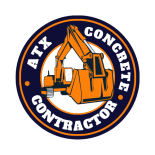Concrete, a durable material, benefits immensely from sealing. Professional concrete sealing is a vital process that offers protection, durability, and aesthetic enhancement to various surfaces. Let’s explore the purpose and numerous benefits it brings.
Purpose of Concrete Sealing:
Protection from Elements: Sealing serves as a comprehensive defense mechanism against various environmental threats, going beyond superficial protection. It acts as a proactive shield, preventing moisture intrusion, especially vital in regions experiencing temperature fluctuations. Understanding the intricate dynamics of freeze-thaw cycles and their impact on concrete underscores the significance of sealing in averting potential cracking or damage during freezing conditions. Moreover, acknowledging the adverse effects of UV rays and extreme weather conditions underscores the critical role of sealing in preserving structural integrity and longevity.
Chemical Resistance: Delving deeper into chemical exposure scenarios elucidates the necessity of sealing in such contexts. Analyzing the specific chemicals prevalent in the environment—be it vehicular fluids in driveways or industrial spills in manufacturing zones—emphasizes the critical role of sealing in thwarting corrosive substances. It acts as a protective barrier, safeguarding the concrete from chemical degradation and preserving its resilience.
Prevention of Stains and Spills: Beyond surface aesthetics, the functionality of sealed surfaces resonates in the ease of maintenance and cleanup. Understanding the penetrative resistance offered by sealing against oil, grease, and other liquids emphasizes its pivotal role in preventing stains. Additionally, recognizing its role in minimizing the absorption of organic materials highlights how sealing ensures a cleaner surface, reducing the need for rigorous cleaning routines.
Enhancement of Durability: Comprehending the reinforcement mechanism of sealants sheds light on their ability to fortify concrete surfaces. Expanding on how sealants mitigate surface wear and tear, particularly in high-traffic areas, underscores their role in extending the surface’s lifespan. Furthermore, exploring how sealing prevents surface erosion, spalling, and the development of minor cracks underscores its proactive role in preserving structural integrity.
Increased Traction and Safety: In-depth exploration of sealants’ additives that enhance surface grip offers insights into their application in moisture-prone areas. Understanding their role in reducing slip hazards reinforces how sealing not only protects surfaces but also promotes safety. Analyzing their contribution to minimizing potential accidents in both pedestrian and vehicular spaces underscores their pivotal role in enhancing overall safety measures.
Eco-Friendly Approach: Focusing on the sustainability aspect of sealing reveals its profound implications in reducing environmental impact. Delving into how sealants extend concrete surface life spans aligns with sustainability goals by diminishing the need for frequent replacements. Further analysis of how sealed surfaces necessitate less maintenance and reduce resource consumption highlights their role in minimizing environmental burdens associated with upkeep, emphasizing their eco-friendly attributes. Understanding the multifaceted benefits of concrete sealing elucidates its overarching contributions, ranging from environmental conservation to safety enhancement.
Benefits of Professional Concrete Sealing:
Long-Term Protection: Understanding the distinct advantages of professional sealing over DIY products involves dissecting the qualities of high-quality sealants. Professional-grade sealants, coupled with expert application, create a robust shield against wear, weathering, and environmental elements. Exploring how these sealants offer superior durability against prolonged exposure underscores their effectiveness in ensuring long-lasting protection.
Enhanced Aesthetics: Professional sealing enhances not only surface protection but also the aesthetic appeal of concrete areas. Diving into the intricacies of how sealed surfaces exhibit deeper and more vibrant colors illuminates the transformative effect on the overall appearance. Deeper colors impart a sense of renewed freshness and meticulous maintenance, elevating the visual appeal and ambiance of the space.
Reduced Maintenance: The inherent ease of maintenance associated with sealed surfaces requires deeper examination. Exploring how these surfaces repel stains, spills, and contaminants elucidates their role in reducing the need for frequent, labor-intensive cleaning or specialized treatments. This streamlined maintenance routine translates to cost savings and reduced upkeep efforts.
Prevention of Damage: Analyzing the protective layer formed by sealing surfaces unveils its preventive prowess against various forms of damage. Highlighting how sealing averts cracks, spalling, and erosion underscores its proactive role in preserving the structural integrity of concrete. Understanding this preventive measure’s cost-effective nature in minimizing extensive repairs or replacements in the future underscores its economic significance.
Weather Resistance: Examining how sealing fortifies concrete surfaces against harsh weather elements reveals its role in mitigating weather-induced damage. Delving into its resistance against freezing temperatures, thawing cycles, and UV exposure showcases its capacity to shield surfaces from weather-related deterioration, ensuring their longevity and resilience.
Enhanced Property Value: The impact of maintained and protected concrete surfaces on property value is multifaceted. Exploring how sealed surfaces enhance curb appeal and provide a polished appearance illuminates their role in attracting potential buyers or tenants. Understanding the positive impression created by well-maintained surfaces underscores their contribution to augmenting property value.
Environmentally Friendly Approach: Highlighting how sealing extends the lifespan of concrete surfaces draws attention to its ecological implications. Reducing the frequency of replacements translates to minimized waste and diminished environmental impact linked with frequent renovations. Exploring this sustainable approach’s alignment with eco-friendly practices underscores its overarching contributions to environmental conservation.
Conclusion:
Professional concrete sealing isn’t merely about preserving surfaces; it’s about fortifying them against the elements, enhancing durability, and elevating aesthetics. This proactive measure ensures long-term protection, reduces maintenance efforts, and amplifies the value of properties, making it a highly advantageous investment.
